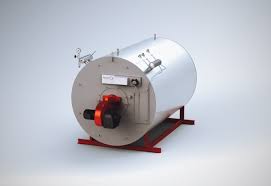
Dec . 05, 2024 14:56 Back to list
installing a steam boiler
Installing a Steam Boiler A Comprehensive Guide
Installing a steam boiler is a crucial process in many industrial applications, as well as in some residential settings. Steam boilers provide reliable heat for various processes and are essential in several sectors, including manufacturing, food preparation, and hospitality. This article serves as a comprehensive guide to understanding and executing the installation of a steam boiler.
Understanding the Basics of Steam Boilers
Before diving into the installation process, it’s essential to understand what a steam boiler is and how it operates. At its core, a steam boiler is a vessel designed to heat water to produce steam. This steam can then be used for various applications, such as heating buildings, powering turbines, or driving heating elements in industrial processes.
The basic components of a steam boiler include a burner, combustion chamber, heat exchanger, controls, and safety features. The burner ignites fuel, which produces heat, while the heat exchanger transfers this heat to the water, creating steam.
Pre-Installation Considerations
1. Regulatory Compliance Before proceeding with the installation, ensure that you comply with local regulations and building codes. Different regions have specific requirements for steam boiler installations, including safety standards and emissions controls. Contact your local authority to obtain all necessary permits.
2. Choosing the Right Boiler Selecting the appropriate steam boiler for your application is crucial. Factors to consider include the boiler's capacity, efficiency, fuel type (natural gas, oil, electricity), and the specific requirements of your facility. Consulting with a professional can help match your needs with the right boiler specifications.
3. Site Preparation The installation site should be adequately prepared. This includes checking for sufficient space, ensuring proper ventilation, and preparing the necessary foundations and supports. The groundwork is critical to ensure that the boiler operates safely and efficiently.
Installation Steps
installing a steam boiler

1. Positioning the Boiler Once the site is prepared, position the steam boiler according to the manufacturer's specifications. Ensure that there is sufficient space around the boiler for maintenance and operation. The layout should also facilitate easy access to utilities such as fuel lines, water supply, and electrical connections.
2. Connecting Water and Fuel Lines Connect the boiler to the water supply and the fuel source. Ensure that all connections are secure and meet the plumbing and gas fitting codes. For gas-fired boilers, consider installing a gas meter if necessary.
3. Installing the Venting System Proper venting is fundamental for the safe operation of a steam boiler. Install a flue or chimney that meets local codes and is capable of handling the emissions produced by the boiler. Ensure that the venting system directs exhaust away from building occupants and prevents back-drafting.
4. Electrical Connections If the boiler requires electrical power for controls and pumps, ensure that all electrical connections comply with local electrical codes. A qualified electrician should handle these connections to guarantee safety and functionality.
5. Control Systems Setup Install and configure the boiler control system. This includes setting up thermostats, pressure sensors, and automation features that will regulate the boiler’s operation, ensuring it runs efficiently and safely.
6. Safety Features Last but not least, ensure that all safety features, such as pressure relief valves, gauges, and alarms, are fully operational. Conduct a thorough inspection to verify that all components are installed correctly and function as intended.
Final Checks and Commissioning
After the installation is complete, it’s crucial to conduct a series of tests to ensure that everything operates correctly. Check for leaks, verify that safety systems are functioning, and ensure that the steam pressure meets the necessary specifications. A professional should perform a final inspection before the boiler goes live.
Conclusion
Installing a steam boiler is a detailed process that requires careful planning, a solid understanding of the equipment, and adherence to safety regulations. By ensuring compliance with local codes, choosing the right equipment, and following systematic installation procedures, you can set up a steam boiler that operates efficiently and safely for years to come. It’s always recommended to seek the assistance of qualified professionals to alleviate potential risks associated with installation and ensure optimal performance.
-
High-Efficiency Commercial Oil Fired Steam Boiler for Industry
NewsJul.30,2025
-
High-Efficiency Biomass Fired Thermal Oil Boiler Solutions
NewsJul.30,2025
-
High Efficiency Gas Fired Thermal Oil Boiler for Industrial Heating
NewsJul.29,2025
-
High-Efficiency Gas Fired Hot Water Boiler for Sale – Reliable & Affordable
NewsJul.29,2025
-
High Efficiency Biomass Fired Hot Water Boiler for Industrial and Commercial Use
NewsJul.29,2025
-
High-Efficiency Biomass Fired Hot Water Boiler for Industrial Use
NewsJul.28,2025
Related PRODUCTS






















